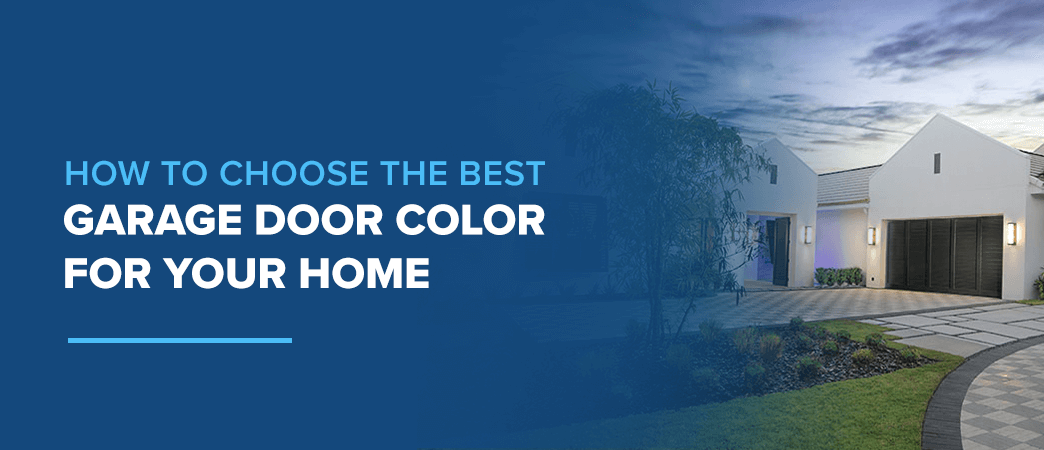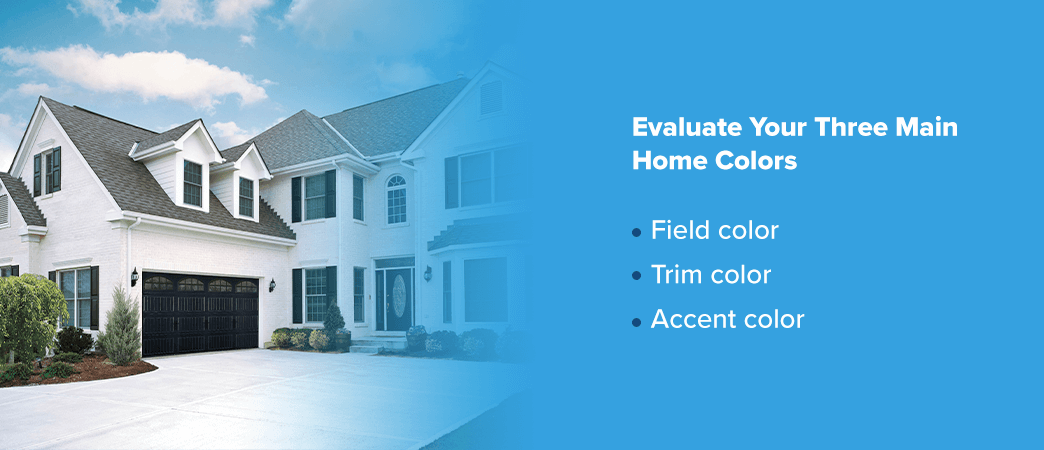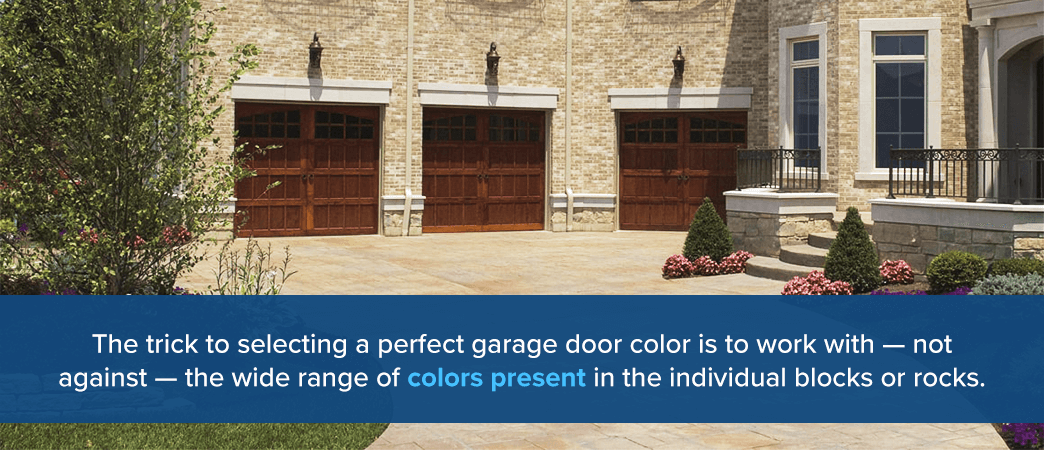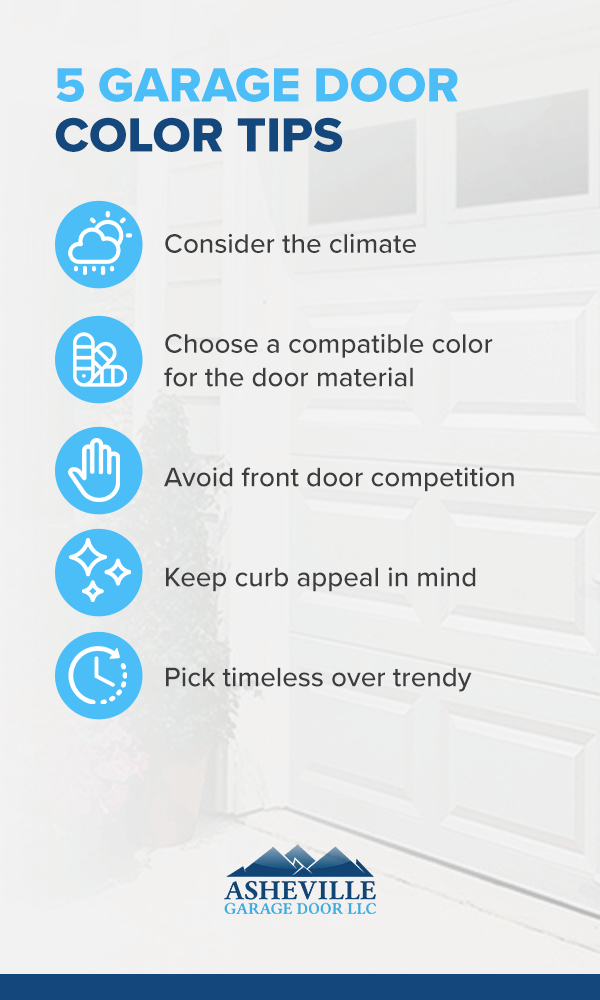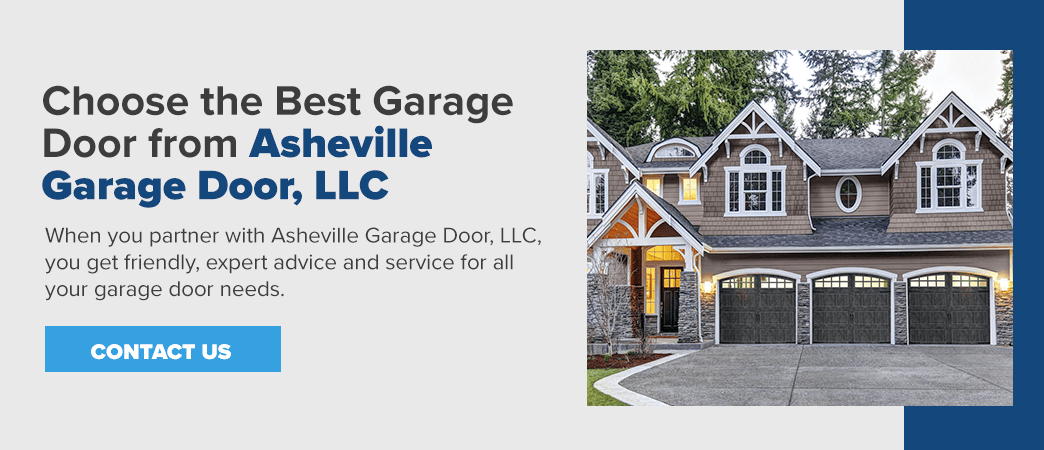How to Choose the Best Garage Door Color for Your Home
Is your garage door looking a bit lackluster? Maybe the paint is fading and peeling, or it no longer fits right with your style or neighborhood architecture. Whatever the reason for wanting a new look for your garage, the great news is that updating the door can increase your property value and could even offer a substantial return on investment!
Since most garage doors take up as much as one-third of your home’s facade, the color choice significantly impacts your home’s overall look — making it all the more crucial to choose the best color for your home.
Our experts are here to take the guesswork out of knowing what color to paint your garage door with this handy guide. Discover how to select the right garage door color based on your home’s color scheme, exterior finishes and architectural style.
What Color Is Your House?
Before you pop open a can of paint or finalize a new garage door purchase, make sure you choose garage paint colors that complement your home’s color scheme. Just because you love a particular shade doesn’t mean it’s a wise choice for your house exterior.
A vivid purple blouse may look incredible on you, but that shade on your garage door could turn your neighbor’s heads for all the wrong reasons.
To pick the best garage colors for your home, you first need to examine your home’s color scheme.
Evaluate Your Three Main Home Colors
Step outside and take a long look at your home’s exterior. Make sure the garage is in view, even if it isn’t attached to the main house so you can visualize finishes together.
Every home has three main colors. What are yours?
- Field color: The dominant color covering most of your home — the brick, stone or siding exterior — is the field color. Garage doors that match a home’s field color blend in and visually expand the house.
- Trim color: Trim includes edging material like door frames, awnings and soffits, and they’re usually a neutral white, cream or black. Many homeowners like to match their garage door to the house trim.
- Accent color: The boldest colors on a home are found in eye-catching accents — your front door and shutters. Avoid matching the garage door to your dominant accent color so you don’t upstage your home’s main areas.
Let’s dive into a quick lesson on the color wheel and color theory to help you understand how colors relate to one another:
- Complementary colors: Complementary colors are direct opposites on the color wheel and offer the strongest visual contrast. Warm yellow pops against cool purple, and vivid orange sings against calming blue.
- Monochromatic colors: Monochromatic colors are different shades of the same hue that offer a cohesive look. The light-to-dark gradient effect on paint swatch cards is an example of a monochromatic aesthetic — imagine a bright pink door on a pastel pink house with a barely pink, almost white trim. On-trend ombre is a popular interior design choice, so it’s no surprise this is a desirable look for house exteriors.
- Analogous colors: Colors next to each other on the color wheel are analogous, like red and red-orange or blue and blue-green. This visual effect is a little bolder than monochrome, yet not as intense as complementary colors.
- Warm and cool colors: Warm colors grab attention and excite, while cool colors calm and relax the viewer. The colors on one half of the wheel, from yellow to red-violet, are warm — the golden sunset colors. You’ll find cool colors on the other half of the wheel between violet, blue and green — think oceanic, grassy hues.
- Neutral colors: Black, gray, brown, tan, cream and white neutrals are not typically included on the color wheel. In the context of design, neutrals are the most versatile because they pair with just about every other color, making them the most popular choice for garage doors.
Now that you understand the effect of different color combinations, let’s learn how to pick a garage door color based on your home’s existing appearance.
White House Garage Door Colors
Bright and timeless, a white house is the perfect blank canvas for various garage door finish and color ideas:
- White: If you want your home to appear larger, a monochromatic white garage door extends the main color of your home, so visitors focus on other details.
- Black: If you want guests to notice your garage door immediately, an elegant black door provides the highest contrast against a modern white house.
- Gray: If you want contrast without committing to a black garage door, consider cool neutral light dove gray or dark charcoal alternatives.
- Brown or wood stain: Do you love the contrast of gray but desire warmth? The warmer tones found in brown or wood-stained doors offer a rich, timeless look.
- Color: If you crave color, white homes offer an ideal backdrop. Prevent the children’s coloring book look by skipping primary colors and choosing softer, more sophisticated versions of your favorites. Instead of color-wheel blue, choose a lighter shade blended with gray. Instead of bright shamrock green, use a softer shade mixed with brown or cream, like olive or sage. Create a cohesive color story with matching shutters, and choose a complementary color for your front door.
Gray House Garage Door Colors
The gray house exterior trend has picked up steam as a versatile neutral option. From nearly white to dark and stormy, the range of grays is vast. Select a door color that complements your specific gray, be it cool or warm, light or dark:
- Make it monochrome: Use the same gray as your home’s field color to expand your house visually and keep your garage subtle. For contrast, choose a gray that’s a shade or two lighter or darker — be sure to maintain the same cool or warm undertone as the dominant gray hue of your home.
- Add contrast: If you want to balance pops of color with a neutral color scheme, add contrast. Is your home a light gray? Go for dark charcoal or black. Is your house a dark gray? Go for a crisp white garage door.
- Dig into deep color: If you want your garage door to make a statement, choose a saturated, darker color for your gray exterior. Rich jewel tones and deeper hues like navy blue, hunter green and burgundy contrast against a gray backdrop. Pull it all together with matching shutters or other architectural details.
- Be careful with browns: Contrast is the key to a successful wood or brown-tone garage door with a gray house. The overall aesthetic could look muddy if both tones are too similar — equally dark or light, or equally cool or warm. Work this color combination with contrast in mind. Pair a dark brown wooden door with a light gray home, or add a warm cedar door to a cool charcoal exterior.
Stone and Brick House Garage Door Colors
The beauty of stone and brick is found in their natural texture and color variations. A brick home may look red from afar, but up close are shades of brown, maroon, bright red and black. The trick to selecting a perfect garage door color is to work with — not against — the wide range of colors present in the individual blocks or rocks. A garage door color that looks great with a gray rock exterior may not look good with reddish brown stones.
Follow these tips to choose the best color door for your brick or stone house:
- Lean into analogous colors: Examine all the tones in your stone. What’s the primary color? What are the accent tones? If you want your garage door to blend in, select a color that’s close to the main color. If you want a subtle contrast, choose a nearby tone on the color wheel.
- Adopt the natural aesthetic: Brick looks lovely with earthy colors and wood tones. Consider neutrals found in nature for your garage door — warm browns, textured wood, smoky grays or creamy taupes.
- Choose high-contrast: Determine the dominant color in your stone and choose a sophisticated version of the complementary color from the color wheel for a dynamic appearance. If your brick is red, choose an earthy green tone — mint, sage or moss. For a yellowish stone, a muted lavender garage door will play up the wow factor.
- Use a soft neutral: Instead of stark black or white, consider a softer contrast for a neutral garage door on a brick home. Cream, taupe and light gray coordinate with the natural lighter tones found in your exterior.
Consider Your Architectural Style and Neighborhood
If the homes on your block share a similar architectural style, you may want to match your garage door color with prominent house colors in the neighborhood. The right color door honors your home’s history, emphasizes its architecture and maintains a cohesive look with the community.
If you’re one of the 73 million Americans living in a community with a homeowners association (HOA) or own property in a historic district, you may need approval for your garage door color and style. Reach out to your board to determine an approved range of options.
Get inspired by traditional colors for some of the most popular architectural house styles:
- Cape Cod: Originating in New England, Cape Cods were designed to withstand the stormy weather of the Northeast coast. Choose a garage door color to complement the tones in the shingled, wood or stone exterior. The best Cape Cod garage colors nod to its history — classic white, cool harbor grays and Atlantic-inspired blues.
- Colonial: One of America’s most popular house styles, symmetrical colonial homes feature brick or wood facades that pair nicely with traditional and wood-look garage doors. Carriage doors are an excellent choice for more ornate Federal-style homes. Choose door hues based on the home’s exterior brick color — white, cream and gray are safe neutrals, and earthy tones are a great historical choice option.
- Craftsman: Embrace the finishes of the Arts and Crafts movement with carriage doors in stained wood or nature-inspired tones like mossy greens, stony grays, lake blues and earthy browns. For a warmer color scheme, autumnal colors like rust orange, mustard yellow and wine red are ideal for Craftsman, Mission and bungalow homes.
- Greek Revival: The most common field color for Greek Revival homes is white or off-white. Choose a classic white door to blend seamlessly with this architectural style.
- Modern: Mid-century modern, minimalist and contemporary homes feature clean lines and mixed materials, like wood, metal and glass. Complement your contemporary home with a stained-wood, dark slate or jet black garage door that shows off frosted glass panels.
- Victorian: Known for their multicolored exteriors, Victorian homes may be one of the few cases where a white door would stick out like a sore thumb! Embrace the fun colors in the exterior and carry those tones into your garage doors. Maintain the jewel-like effect of your house using a two-tone approach to mimic the painted trims in Victorian architecture.
Garage Door Accent Color Ideas
Two-tone colors are ideal for doors with layered details, like carriage doors. Painting the raised sections a different color from the base ties the garage door to your house details and accents. Consider these gorgeous combinations:
- Sage green with taupe trim
- Light gray with crisp white trim
- Buttery yellow with cream trim
- Dark charcoal with light gray trim
- Medium wood stain with dark brown trim
- Warm tan with almond trim
- Stormy gray-blue with classic white trim
5 Garage Door Color Tips
Narrow down your perfect garage door tone with these at-a-glance color tips:
- Consider the climate: If you live in a sunny or humid environment, wood doors may warp or fade without proper treatment. Keep seasonal weather conditions in mind as you select your door. Talk to a trusted garage door specialist to choose finishes that will look beautiful for years to come.
- Choose a compatible color for the door material: Use a color that’s compatible with your preferred garage door material. Wood, steel, aluminum, vinyl and composite doors offer different colors and factory finishes in varying degrees of durability and maintenance.
- Avoid front door competition: Your front door should always be the focal point of your house — make sure it stands out against the rest of your home and garage. Don’t accidentally upstage your entry by matching your garage to the front door. Reserve bright, intense colors for the front door unless you have a Victorian home painted porch-to-turret with multiple hues.
- Keep curb appeal in mind: If in doubt, the easiest choice you can make for your resale and home value is to pick a door that matches the tone and style of the garages on your block. A one-tone, clean and classic neutral like white or light gray is always safe.
- Pick timeless over trendy: Color trends come and go in fashion and design. Your garage door will last many years, so choose a timeless color that will ensure your home looks beautiful no matter what colors are on-trend next season. The most common garage door color is classic white. Other popular garage door colors that look good in any decade include gray, taupe and walnut brown.
Choose the Best Garage Door From Asheville Garage Door, LLC
Are you looking to update your garage door? We’ve got you covered! When you partner with Asheville Garage Door, LLC, you get friendly, expert advice and service for all your garage door needs. We offer a wide selection of superior-quality garage doors for your home or business.
As a top-rated garage door repair and installation company with more than 25 years of experience, we work with you to provide the best possible garage door solutions and help you select the best choice for your budget to boost curb appeal, add security, improve energy efficiency and increase your property value.
Give us a call at 828-255-0830 or contact us online today to find the garage door of your dreams!


